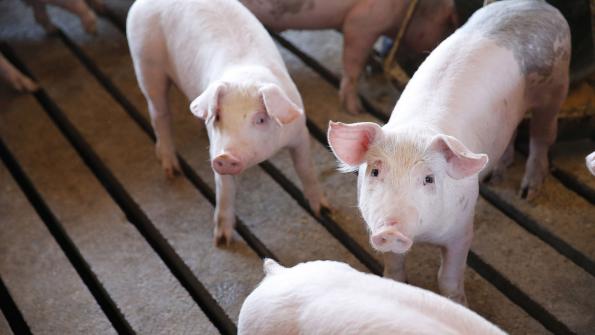Researchers have identified more than 80 references to technologies; most prevalent are fibrous filtration, ultraviolet light and electrostatic precipitation.
January 5, 2022

A project designed to help prevent the spread of infectious bioaerosols capable of causing swine disease outbreaks with significant economic consequences is underway. Funded by the Swine Health Information Center (SHIC) and being conducted by University of Minnesota (UMN) staff, work on objective one began in October 2021 and has provided initial insights. This portion of the project is identifying existing and emerging aerosol technologies and procedures, then reviewing them to assess their ability to contain bioaerosols in the face of disease outbreaks in swine.
As part of the literature review being conducted during the first objective, researchers have identified more than 80 references on different technologies. Those identified so far include fibrous filtration, ionization, bipolar ionization, ultraviolet light type C, ultraviolet light type A, electrostatic precipitation, microwave, photo electrochemical oxidation, non-thermal plasmas and air filters coated with antimicrobial property materials. The literature search is being conducted mostly through the Web of Science, PubMed, Google Scholar and Scopus databases. Researchers expect to finalize the review of the technologies from the public database by February.
Experts at the UMN College of Veterinary Medicine and the College of Science and Engineering have been assembled to conduct the extensive literature search on known technologies directed at removing airborne particles from the air. Individuals have also been identified who have experience in handling disease outbreaks in the swine and poultry industries, handling outbreaks from a regulatory point of view, as well as others with experience in handling human and animal disease outbreaks. An additional group who will assist with the selection and evaluation of the technologies and measures for their application to swine have also been identified with plans to continue progress on the project in early 2022.
The breakdown of references and a description of the most prevalent technologies is as follows:
Fibrous Filtration (11 references): Filtration is the most well-established and widely applied approach for biocontainment. Its method of action is the indiscriminate removal of particles from flowing airstreams. There is a balance between the particle size dependent on removal efficiency for a filter, which should be as high as possible, and the pressure drop across the filter for a given flow rate, which is directly related to the energy costs of filter operation. Furthermore, filter loading increases pressure drop but also efficiency, and must be considered in filter application.
Ultraviolet light technologies (16 references): UV-C light at 254 nanometers (nm) is an established route towards pathogen inactivation in aerosols and on surfaces, as nucleic acid molecules readily absorb photons near this wavelength. UV-C (and potentially UV-A) sources can be incorporated in ducts to directly inactivate pathogens in aerosols, in conjunction with filters to inactivate collected pathogens and in upper room bulbs to inactivate larger spaces. However, the latter typically cannot be operated continuously, as UV-C can be mutagenic or carcinogenic at high enough exposure levels.
Electrostatic precipitation (10 references): Commonly used in the combustion industry, electrostatic precipitation is a process wherein particles are unipolarly ionized through interaction with gas phase ions, and ionized particles are exposed to DC electric fields, which lead to their deposition. Electrostatic precipitators (ESPs) are competitive technologies with filters, able to achieve similar-to-better collection efficiencies with minimal pressure drops. They still require periodic cleaning of particles from deposition electrodes, and their performance does change over time as particles deposit.
Other ionization, catalysis and disinfection technologies: In addition to previously discussed established technologies, there are some more recently developed ionization schemes (16 references), photocatalytic approaches (nine references) and disinfection technologies (13 references) which are still at the developmental stage. These need to be 1) tested for efficacy at scales relevant to agricultural biocontainment and 2) tested for animal safety.
This work will be complementary to additional objectives of the project which will be addressed in 2022.
Source: SHIC, which is solely responsible for the information provided and is wholly owned by the source. Informa Business Media and all its subsidiaries are not responsible for any of the content contained in this information asset.
You May Also Like



